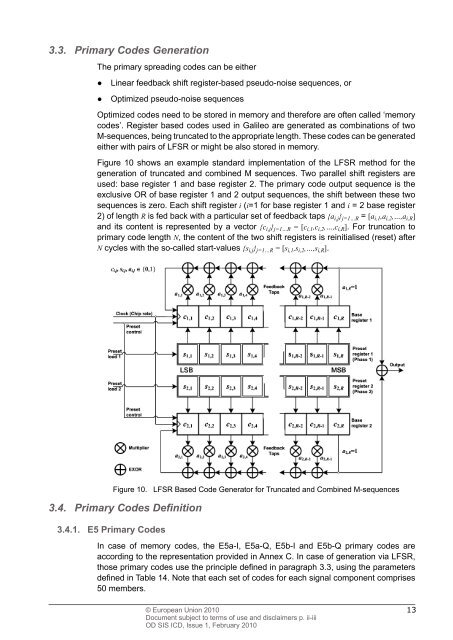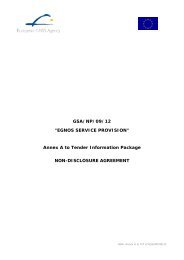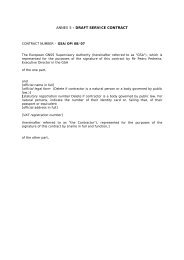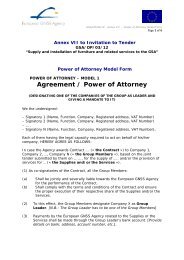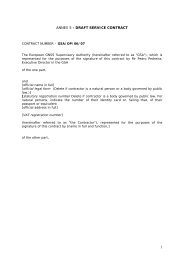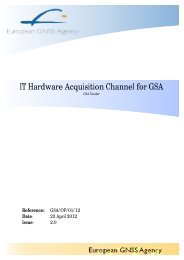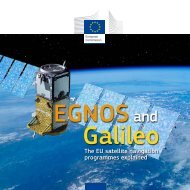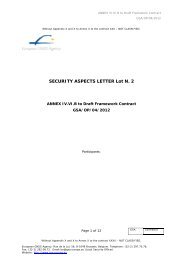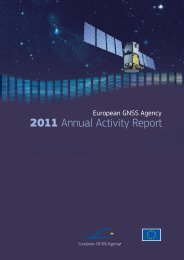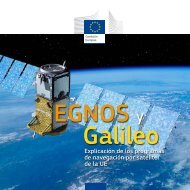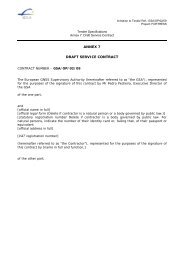Galileo OS SIS ICD.indd - GSA - Europa
Galileo OS SIS ICD.indd - GSA - Europa
Galileo OS SIS ICD.indd - GSA - Europa
Create successful ePaper yourself
Turn your PDF publications into a flip-book with our unique Google optimized e-Paper software.
3.3. Primary Codes Generation<br />
The primary spreading codes can be either<br />
● Linear feedback shift register-based pseudo-noise sequences, or<br />
● Optimized pseudo-noise sequences<br />
Optimized codes need to be stored in memory and therefore are often called ‘memory<br />
codes’. Register based codes used in <strong>Galileo</strong> are generated as combinations of two<br />
M-sequences, being truncated to the appropriate length. These codes can be generated<br />
either with pairs of LFSR or might be also stored in memory.<br />
Figure 10 shows an example standard implementation of the LFSR method for the<br />
generation of truncated and combined M sequences. Two parallel shift registers are<br />
used: base register 1 and base register 2. The primary code output sequence is the<br />
exclusive OR of base register 1 and 2 output sequences, the shift between these two<br />
sequences is zero. Each shift register i (i=1 for base register 1 and i = 2 base register<br />
2) of length R is fed back with a particular set of feedback taps {a i,j} j=1…R = [a i,1,a i,2,…,a i,R]<br />
and its content is represented by a vector {c i,j} j=1…R = [c i,1,c i,2,…,c i,R]. For truncation to<br />
primary code length N, the content of the two shift registers is reinitialised (reset) after<br />
N cycles with the so-called start-values {s i,j} j=1…R = [s i,1,s i,2,…,s i,R].<br />
Figure 10. LFSR Based Code Generator for Truncated and Combined M-sequences<br />
3.4. Primary Codes Defi nition<br />
3.4.1. E5 Primary Codes<br />
In case of memory codes, the E5a-I, E5a-Q, E5b-I and E5b-Q primary codes are<br />
according to the representation provided in Annex C. In case of generation via LFSR,<br />
those primary codes use the principle defi ned in paragraph 3.3, using the parameters<br />
defi ned in Table 14. Note that each set of codes for each signal component comprises<br />
50 members.<br />
© European Union 2010<br />
Document subject to terms of use and disclaimers p. ii-iii<br />
OD <strong>SIS</strong> <strong>ICD</strong>, Issue 1, February 2010<br />
13


